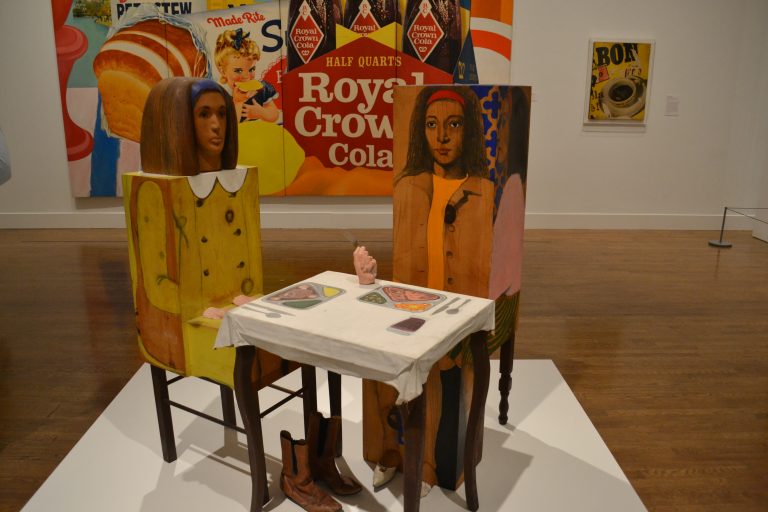
Written By Lindsay Hargrave
Photos By Josh Zegans
Consumerism and advertising: these two things have shaped not only our economy, but also our culture.
The Pop Art movement focused on these two ideas as a basis for most of its subject matter, giving it a pretty unified message: we are consumers, and that can define our lives.

Although many tend to associate heavy consumerism with the United States alone, pop art spreads across continents, making its mark everywhere from England to Japan to Argentina.
The Philadelphia Museum of Art held an evening event in conjunction with its current “International Pop” exhibition on Wednesday, March 30, to celebrate pop art and its effects on international culture.
This event, which took place on one of the museum’s “Pay-What-You-Wish” evenings, brought in Dr. Sketchy’s Philadelphia, an “anti-art” organization that holds events and classes where “artists draw glamorous underground performers in an atmosphere of boozy conviviality,” according to their website. Along with the sketching of these 60s-themed models, the event also offered retro-style makeovers, all in the setting of the Philadelphia Art Museum, where attendees were of course encouraged to peruse the International Pop exhibition.

This event was the perfect hub for fans and critics of pop art alike to gather and discuss its merits, shortcomings, and overall impact.
Candy Mayhem, an artist, performer, and current head of the Philadelphia branch of Dr. Sketchy’s, ran the show for the models and those sketching them. “It was a challenge to recreate pieces of art that are so recognizable,” she said.

And that is just what pop art is: recognizable. “It can be redundant. It’s advertising,” Mayhem said. She admitted to having a love/hate relationship with the movement, as did many spectators viewing the exhibition.
One spectator, Emma Sanders, feels that its easy recognition contributes to its message. “I’ve always thought of it as a social comment on consumerist society,” she said. Although, she did admit that pop art does not move her the same way other movements such as modernism do.

Another spectator, Rebecca Bega, said she loved the combination of artistic, social and political content that pop art displays. “I’m mostly just shocked how well preserved the pieces are,” she said.
This combination is what probably drives the masses to be so attracted to it. “It’s the most accessible form of art,” Mayhem said, “I love the impact.” She added that she was attracted to pop art’s role in public and within communities.
“I love advertising,” she said. “It’s something that is taken for granted that we see every single day, and if we took that aspect of our lives out—took every logo off of everything—what a bland, artless world this would be.” ![]()